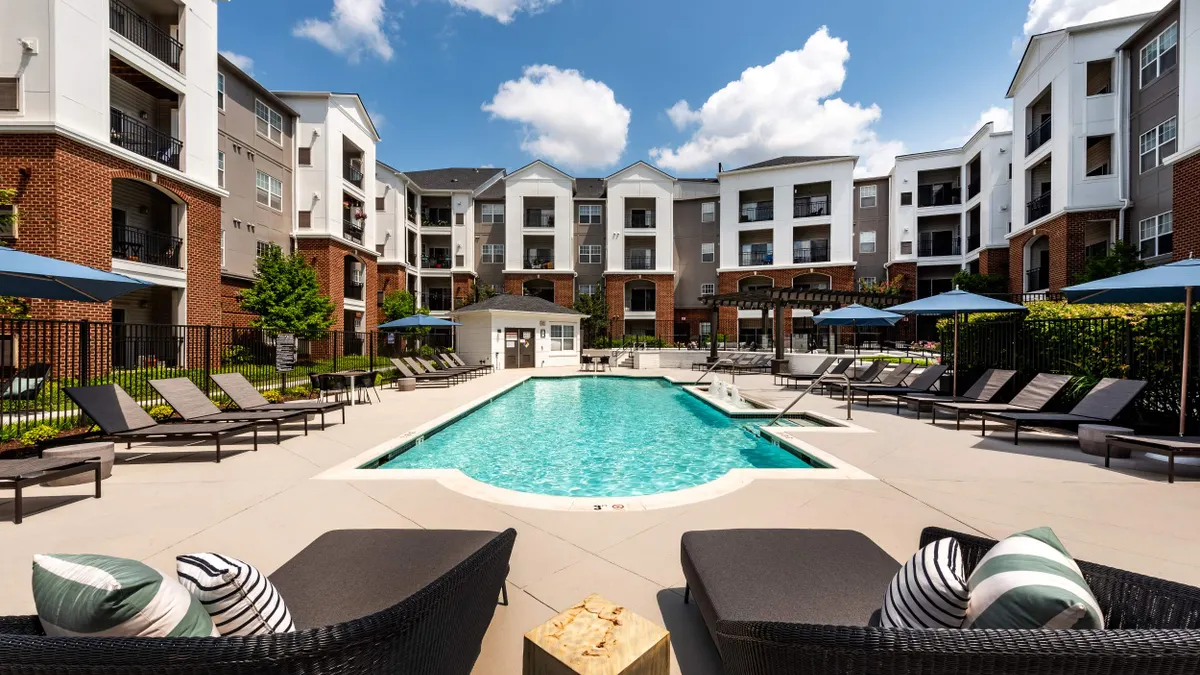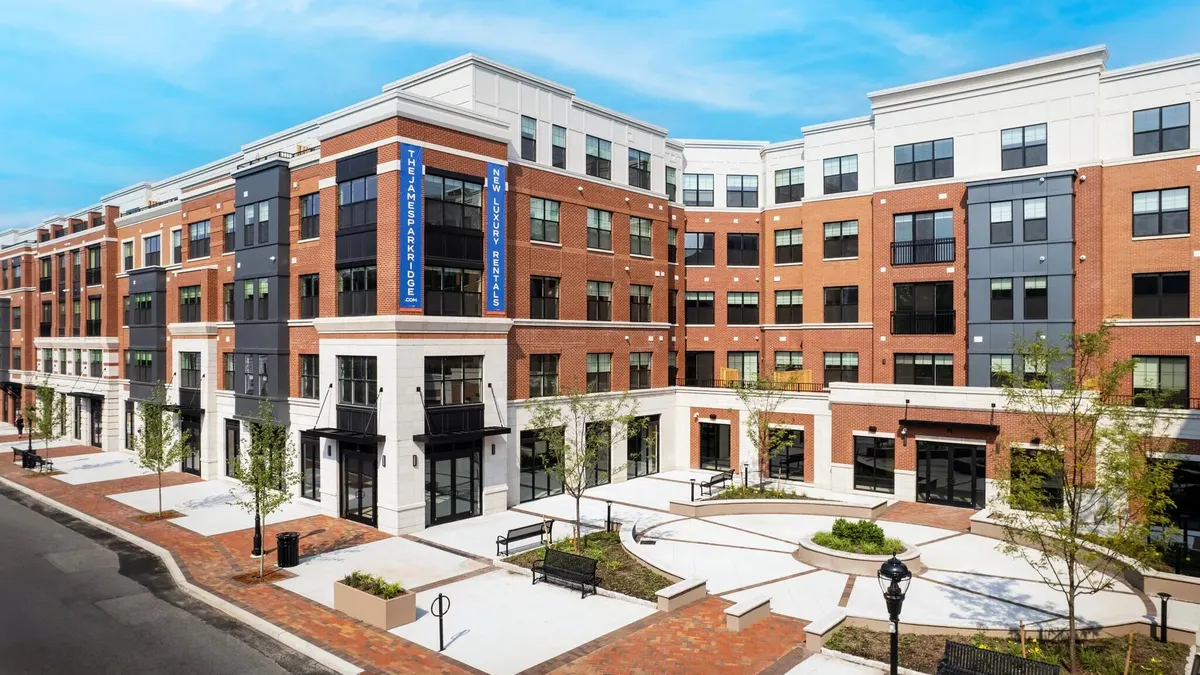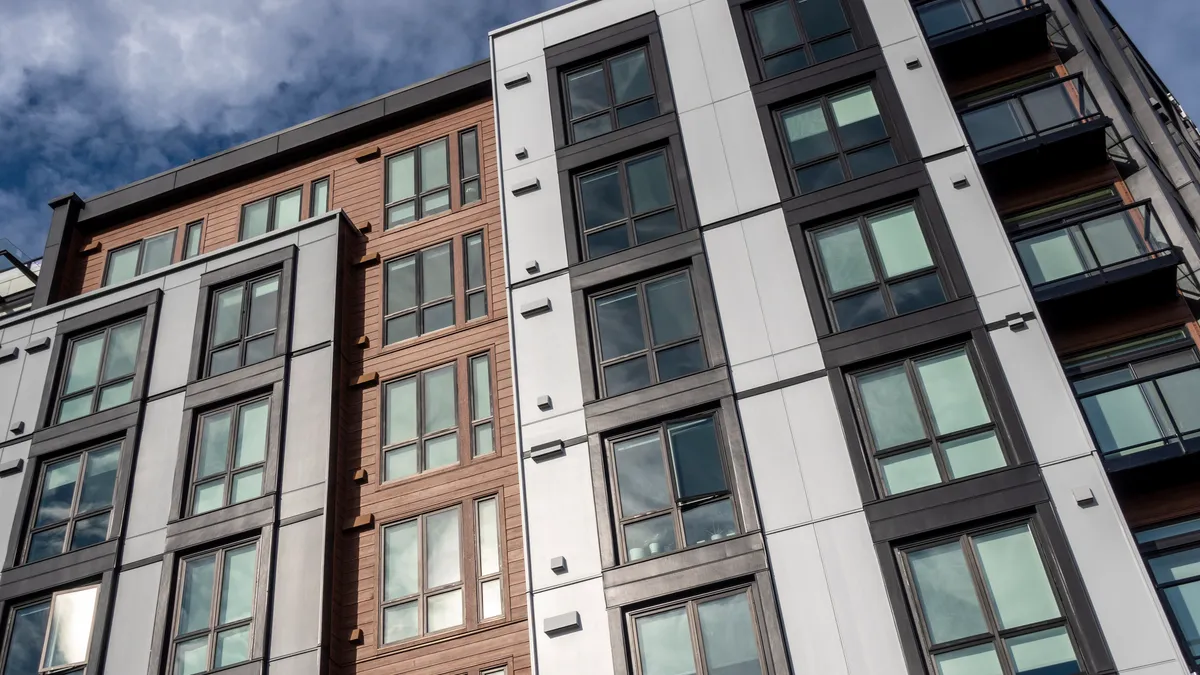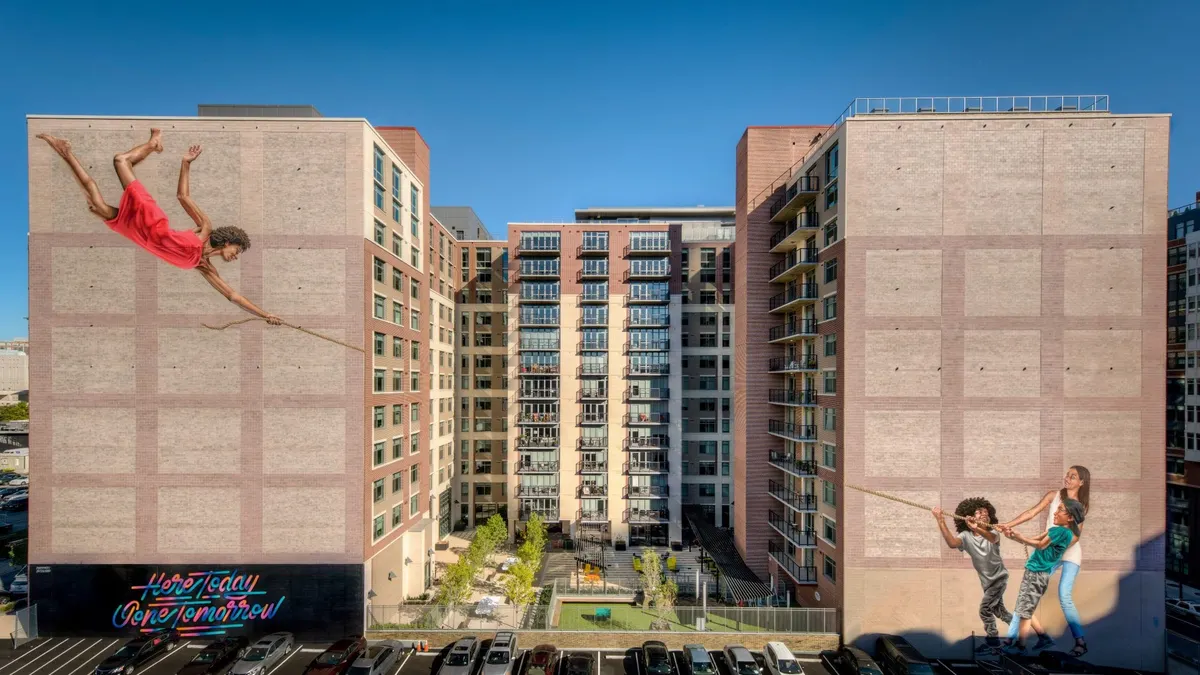For over a year now, transaction volume has fallen to levels not seen since the global financial crisis. The Federal Reserve’s signal in late 2023 that rate hikes were coming to an end was backed by the Central Bank holding the main rate steady last week.
Still, the Fed’s hint doesn't seem to be enough to bring deal-makers off the sidelines. The buzz from investment firms at the National Multifamily Housing Council’s Apartment Strategies Conference last week in San Diego was that buyers want to see at least 90 days of stabilization of rates before jumping in.
But others think a decisive move from the Fed could open up the market. “I’m optimistic that, with the first rate cut, we [will] really start to see transactions move and capital that’s on the sideline come forward,” said panelist Mick Flanagan, president of development for Camden, New Jersey-based developer The Michaels Organization.
Overall, the anticipation of possible rate cuts led to a hopeful tone at the event.
“The level of optimism at the conference was significantly better than 2023,” Ernie Katai, executive vice president and head of production at New York City–based commercial real estate services firm Berkadia, told Multifamily Dive. “Rates continue to be the driving force for activity flow in 2024.”
Here are three other takeaways from the conference:
Supply neutralizes demand
Yardi and RealPage played prominent roles in one of the Apartment Strategies Conference sessions. But outside of a warning about pricing discussions on the screen and one panelist expressing concern about litigation, little was mentioned about the antitrust suits against the software and analytics companies.
Jeff Adler, vice president of Matrix Yardi Systems, and Jay Parsons, senior vice president and chief economist at RealPage, held court in one session and generally agreed that there was strong underlying demand in the market. “We think there is a real correlation between consumer confidence and demand,” Parsons said.
But there were differences of opinion. Parsons expects wages to continue to outpace rents this year as consumer confidence continues to improve. However, Adler sees some concerns on the horizon, like increasing credit card balances. “Some weaknesses are starting to occur in the consumer sector,” he said.
Right now, the problem isn’t demand. “We’re seeing really great demand and that has to do with supply,” Parsons said.
Parsons said this year will be challenging, but supply will soon tail off. On the other hand, Adler thinks developers have been more resilient than is often reported, and that starts will only begin to really fall in the third quarter, which means new competition could be a lingering issue for owners in certain markets for a while.
But is more supply actually good?
Over the past decade, the rent control movement has spread to various cities nationwide as rents have risen. On the topic of affordability, the apartment industry generally advocates that more housing will bring prices down.
Conference panelists didn’t veer from this tried-and-true playbook, but some presenters highlighted creative ways to build housing in this difficult, high-interest-rate environment
If local governments are on board and provide things like density bonuses and breaks on parking requirements, it can go a long way to making deals pencil out. “Municipalities play a large role,” said Ricardo Rivas, CEO of Houston-based owner, manager and developer Allied Orion Group during a session.
For instance, in Orlando, Florida, Michaels is working on a 1,500-unit project where Disney is contributing the land the developer will use under a ground lease, according to Flanagan. In the same session, Angela Biggs, managing director of investment for London-based international property developer, manager and investor Grosvenor, highlighted a project her company is building in Montgomery County, Maryland, where the locality is providing funding to offset the cost of rent-restricted units.
However, despite the industry’s focus on supply, some panelists advocated anti-gouging legislation that would cap rent increases at 10%, for instance.
“I think there's much more energy on those kinds of interventions [than traditional rent control],” said panelist Ben Metcalf, managing director of Terner Center for Housing Innovation at the University of California at Berkeley. “And I wouldn't be surprised if that continues to percolate out there around the country.”
Costs go down
Although interest rates remain higher than they were a couple of years ago, other costs for developers, owners and operators are falling. For instance, as construction continues to slow, it will be easier for builders to find workers, which will bring development costs down.
“In addition to optimism from the capital markets, we’re also starting to see labor softening as well,” Biggs said.
Insurance costs have been a major concern for apartment owners. “The past two years have been extremely hard,” said panelist Karen Key, division president of the Southeast for Houston-based third-party property management firm Asset Living.
But there are ways to minimize costs. If owners and operators can improve the information and data they provide insurers and underwriters, they can understand how to stem price hikes, according to presenter Beth Anne Coleman, chief compliance officer and risk manager at San Diego-based apartment owner and operator Fairfield.
“After six years of a very hard market, with a number of significant pressures — headwinds against us — we are seeing some signs of relief in the property market,” Coleman said.
Click here to sign up to receive multifamily and apartment news like this article in your inbox every weekday.


















